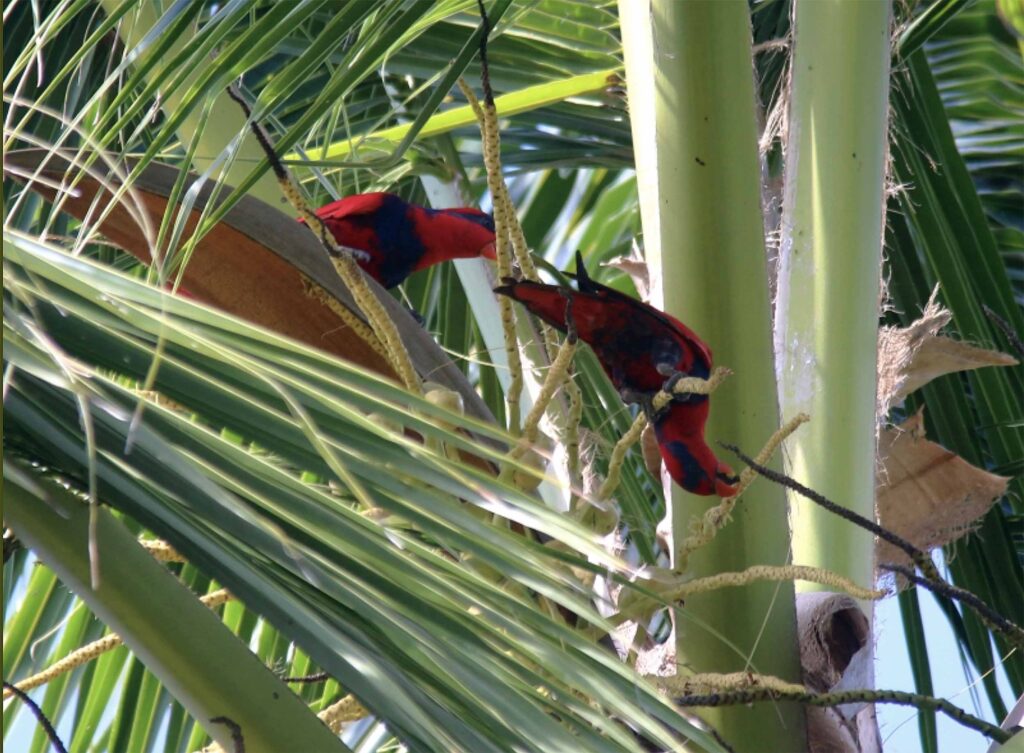Red-and-blue Lories: Local Conservation and Education
A well-informed, engaged and empowered community forms the backbone of conservation efforts for Red-and-blue Lories (Eos histrio). WPT’s sensitisation work will foster a strong connection between the local population and the benefits of having these parrots in their forests.
The focus will be on protecting habitat, promoting environmentally-conscious agricultural practices and eco-tourism opportunities. Partner Pusat Informasi Sampiri (PIS) will mount a community campaign using leaflets, workshops and community message boards to engage local people and encourage a sense of stewardship towards the birds. The collaborative effort aims to lessen the threats arising from economic pressures or unintended environmental damage. Awareness programs and workshops have successfully engaged the younger generation and local farmers, encouraging a shift away from harmful practices such as pesticide use. Several village heads attended these workshops, expressing interest in adopting permaculture techniques to reduce reliance on chemicals and prevent bioaccumulation of pesticides in Red-and-blue lories.
In partnership with other NGOs, the WPT will also explore opportunities to provide additional support to the island to reduce reliance on trapping for trade by presenting viable alternatives. Birdwatching tourism has already emerged as a sound income source.
IUCN/CITES Status: Endangered / Appendix I
Population: As few as 1000; nominate of species possibly extinct on Sangihe Is.
Range: Native to Sangihe, Talaud and Nanusa Islands, Indonesia.
Natural history: Red-and-blue Lories are found in forest and cultivated areas up to 1250 m (4100 ft). Their diet includes coconut, and the fruit and nectar of various trees. Insects are also taken. They are most commonly seen flying in groups of up to 8 birds. Large, very vocal numbers gather together to roost.

